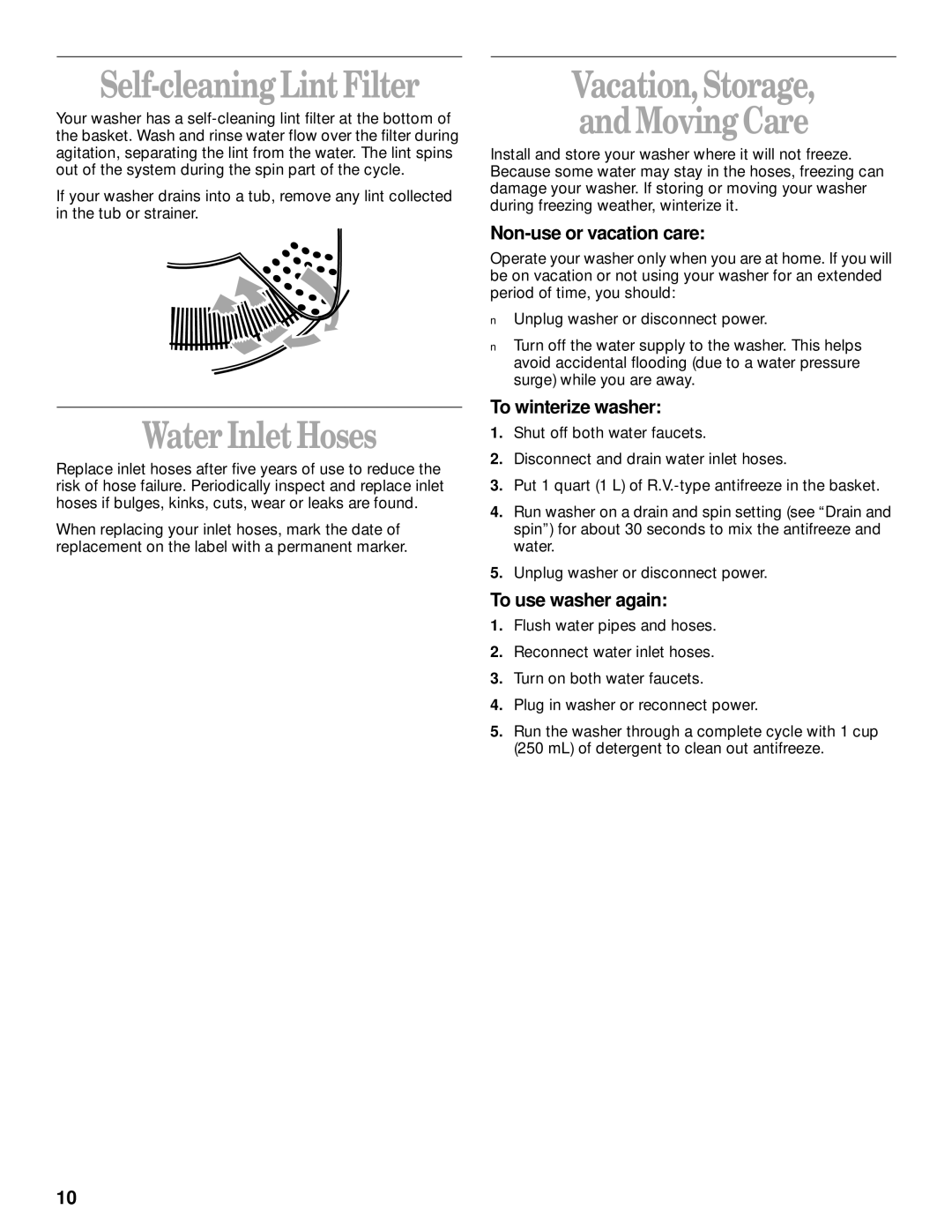3950319 specifications
The Whirlpool 3950319 is an innovative replacement part designed for various Whirlpool appliances, primarily dryers. This versatile component is noteworthy for its high reliability and exceptional performance in enhancing appliance efficiency.One of the main features of the Whirlpool 3950319 is its robust construction, which ensures longevity and durability. Manufactured with premium materials, it is engineered to withstand the rigors of daily use, making it a dependable option for homeowners. This part is also designed for easy installation, allowing users to replace their faulty components with minimal hassle. The straightforward design means that even those with limited technical expertise can restore their appliances to optimal functionality.
In terms of technology, the Whirlpool 3950319 integrates seamlessly with a wide range of Whirlpool appliances. It features advanced engineering that enhances the overall performance of dryers, contributing to better drying efficiency. This part plays a crucial role in maintaining consistent heat within the dryer, which is essential for effective drying cycles. As a result, it helps reduce drying times, leading to energy savings and lower utility bills for consumers.
The Whirlpool 3950319 is compatible with various Whirlpool dryer models, making it a versatile choice for many households. This compatibility allows users to replace older or worn-out components without needing to purchase an entirely new appliance, making it a cost-effective solution. Additionally, this part is thoroughly tested to meet stringent quality standards, ensuring that it performs reliably over time.
Another significant characteristic of the Whirlpool 3950319 is its user-friendly design. It typically comes with clear instructions, which guide users through the installation process. This focus on usability enhances the overall customer experience, allowing individuals to troubleshoot and resolve appliance issues more efficiently.
In summary, the Whirlpool 3950319 stands out as a key component for Whirlpool dryers, offering durability, easy installation, and enhanced performance. Its advanced technologies contribute to improved energy efficiency and drying capabilities, making it a smart investment for any household looking to maintain their appliances effectively.

